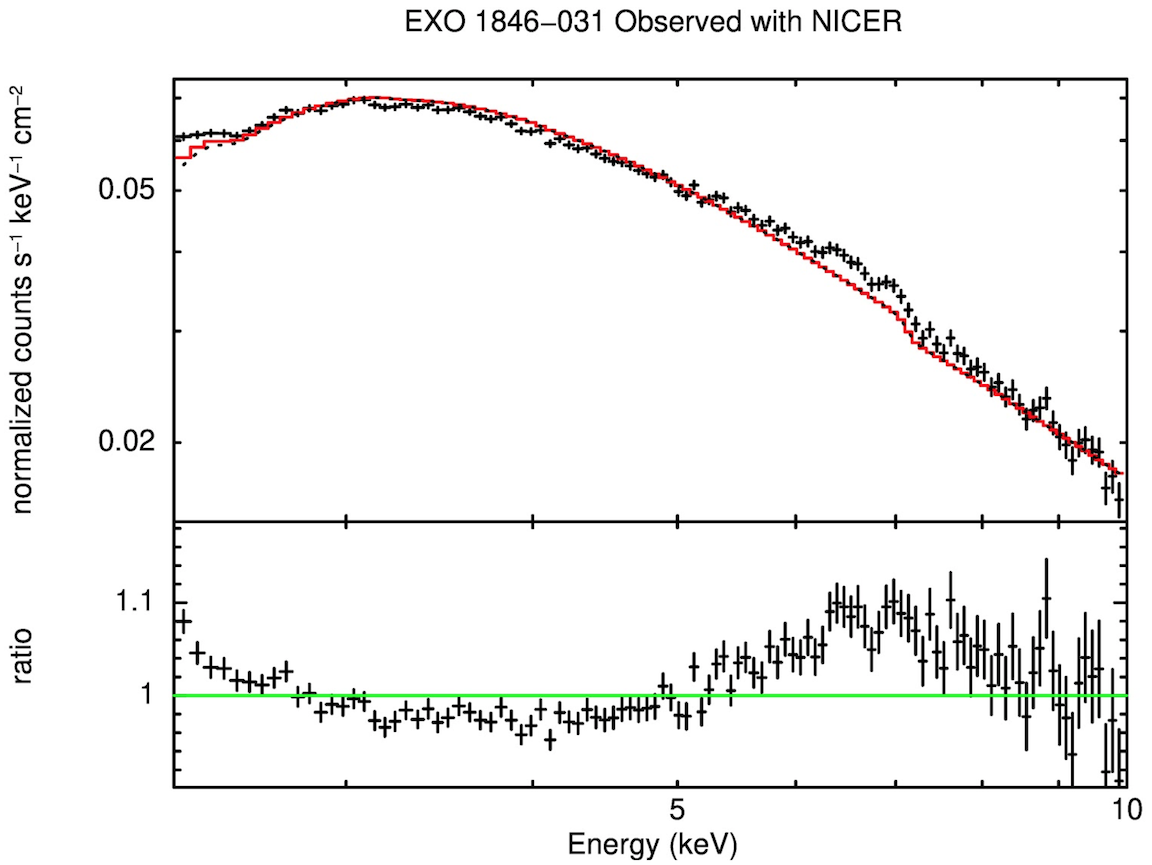NICER / ISS Science Nugget for August 1, 2019EXO 1846-031 reawakens after 34-year silenceIn 1985, a new transient X-ray source was discovered by the EXOSAT satellite: EXO 1846-031. The source was seen to have the characteristics of a black hole binary system, but no definitive signatures were found, and the source has been quiet for over 34 years. In the past week, EXO 1846-031 has reawakened. It was detected by the ISS JAXA payload, MAXI. The MAXI team informed the NICER team about this new activity, and NICER has initiated a dedicated monitoring program. In the 34 years since EXO 1846-031 was last detected, our knowledge of how to differentiate neutron stars and black holes using X-ray observations has improved. The time series analysis and spectral analysis ongoing with NICER have the potential to clearly determine the nature of EXO 1846-031. NICER's initial observations are reported in the Astronomers Telegram: ATEL #12976. The figure shows an initial NICER spectrum of EXO 1846-031. Fit with a simple power-law function, the data show a broad iron K-alpha emission line peaking at 7 keV. These features are the result of relativistic motions close to a compact object, and may ultimately allow the nature of this accreting object to be clearly identified.
To understand the relative populations of stellar-mass black holes and neutron stars in the universe, and their formation channels, we need different scientific approaches. LIGO transients provide one set of constraints. The ability of MAXI to detect new activity from sources in the Milky Way, and the ability of NICER to perform timing and spectroscopy, provides an independent angle. The synergy between MAXI and NICER illustrates the potential of the ISS as a scientific laboratory. NICER
|



